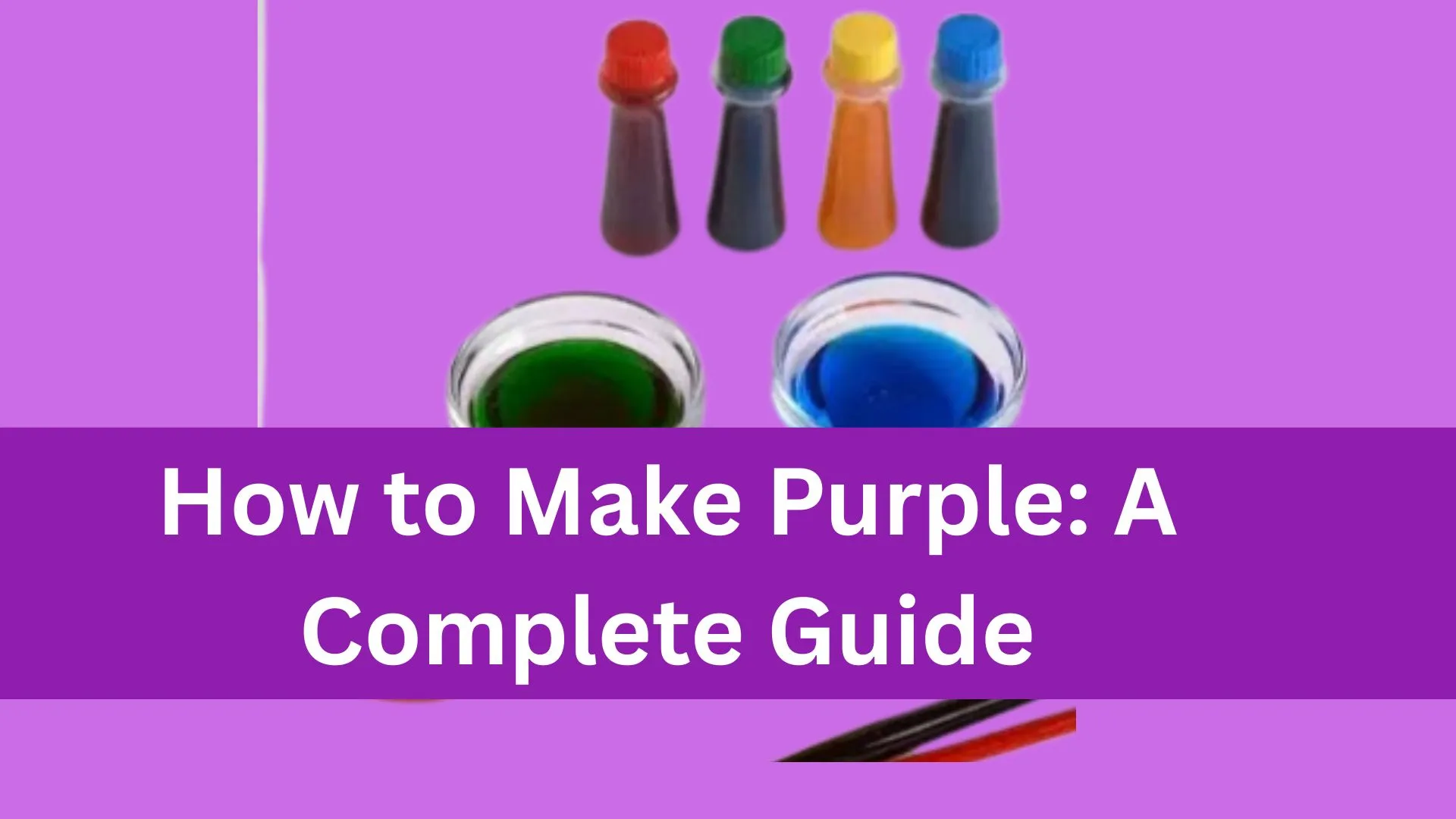For centuries, purple has captivated scientists, designers, and artists. This striking shade conveys mystery, inventiveness, and elegance in everything from contemporary digital screens to royal robes. Many people are curious about the actual process of making this. Mixing two colors may seem easy, but there’s more to making the ideal this than you might imagine. This post will discuss the origins of this, its scientific basis, and how to create it using paint, light, and even common objects.
A Brief History of Purple
Let’s quickly review Purple’s history before getting into the “how.” This dye was extremely valuable and rare in the past. The Phoenicians made it from sea snails, and only the affluent and royalty could afford it due to its high production costs. For this reason, it is frequently associated with royalty and wealth. Anyone can now create this at home using contemporary pigments and technology, whether for crafts, digital design, or painting.
The Science of Purple
Unlike red, blue, and yellow, this is not a primary color. Rather, it is a secondary color, which means that other colors are combined to create it. According to conventional color theory, which is applied in painting, this is made by combining red and blue. However, you won’t get the same this from every red or blue. The tone, brightness, and even the medium you use all affect the precise shade.
The RGB (red, green, blue) system is used to create colors in the world of light, such as on screens. When red and blue light combine in this system, this is produced. Because of this, your computer or TV can display a wide range of these hues using only red and blue pixels.
How to Make Purple with Paint?
This paint is probably necessary if you’re an artist or a student working on a project. Here’s how to make it:
1. Start with Primary Colors
To make purple, use red paint and blue paint. Place equal amounts of each on your palette.
2. Mix in Equal Parts
Blend them slowly until you get a solid color. This will usually give you a medium purple, often called violet.
3. Adjust the Shade
- To make a lighter purple (lavender or lilac), add a small amount of white paint.
- To make darker purple (plum or indigo), add a touch of black or more blue.
- To make a warmer purple, add a little extra red.
- To make a cooler purple, add more blue.
4. Experiment with Different Reds and Blues
Not all reds and blues create the same thing. For example:
Magenta + cyan = bright purple
Crimson red + ultramarine blue = deep, rich purple
Cadmium red + cobalt blue = muted purple
How to Make Purple with Light?
Additive mixing is used to create color on digital screens or in lighting. This entails mixing light of various intensities.
- light the result of adding red and blue light.
- Cut down on the red’s brightness if you want a softer this.
- Equally increase the red and blue if you want a deeper purple.
This is how stage lighting works: the area in the middle appears like this when a red and a blue spotlight overlap.
How to Make Purple with Everyday Items?
Paint and light are not always necessary to create purple. Here are some entertaining techniques:
- Red and blue food coloring should be combined in equal amounts. Use it for art projects, cakes, or beverages. For lighter or darker hues, change the ratio.
- Markers or crayons: Apply a first coat of red to a surface, followed by a layer of blue (or vice versa). Purple is produced by blending.
- Flowers and Plants: You can make a purple dye by mixing some natural ingredients, such as blueberries (blue) and beet juice (red). It’s a creative, natural alternative, even though it won’t be as vibrant as synthetic colors.
Common Mistakes When Making Purple
Mixing purple is a challenge for many novices. Here are a few problems and solutions:
- Issue: The purple appears brown or muddy.
- Solution: Swap out drab reds and blues for more vibrant, pure hues like magenta and cyan.
- The purple is too dark.
- Solution: Use lighter shades of blue and red, or add white to lighten them.
- Issue: The purple isn’t very noticeable.
- Solution: Adjust the proportions until the shade seems vibrant.
Shades of Purple You Can Create
There are numerous shades of purple; it’s not just one color. Here are a few well-known ones:
- Lavender: a delicate shade of purple (red, blue, and white)
- Violet: Vibrant purple with equal amounts of red and blue
- Lilac: a soft, pale purple with a hint of white
- Plum: a deep purple color with additional black and red
- Deep purple with a hint of blue is called indigo.
You can create countless shades for various designs and moods by adjusting proportions.
Why Purple Matters
This has cultural and psychological significance in addition to being aesthetically pleasing. It frequently stands for spirituality, creativity, and wisdom. Many artists use it to express their creativity, and brands use it to allude to exclusivity or luxury. You can manipulate the appearance of this in your artwork, designs, or decorations by learning how to make it.
Final Thoughts
Although it may appear easy, creating purple is a skill of balance. The key is to experiment with red and blue until you find the shade you like, whether you’re blending food coloring, adjusting digital screens, or mixing paint. You can create anything from delicate lavender to striking indigo by varying the ratio or adding white or black.
The next time you need purple for a project, keep in mind that it’s about combining creativity, history, and science in one.


